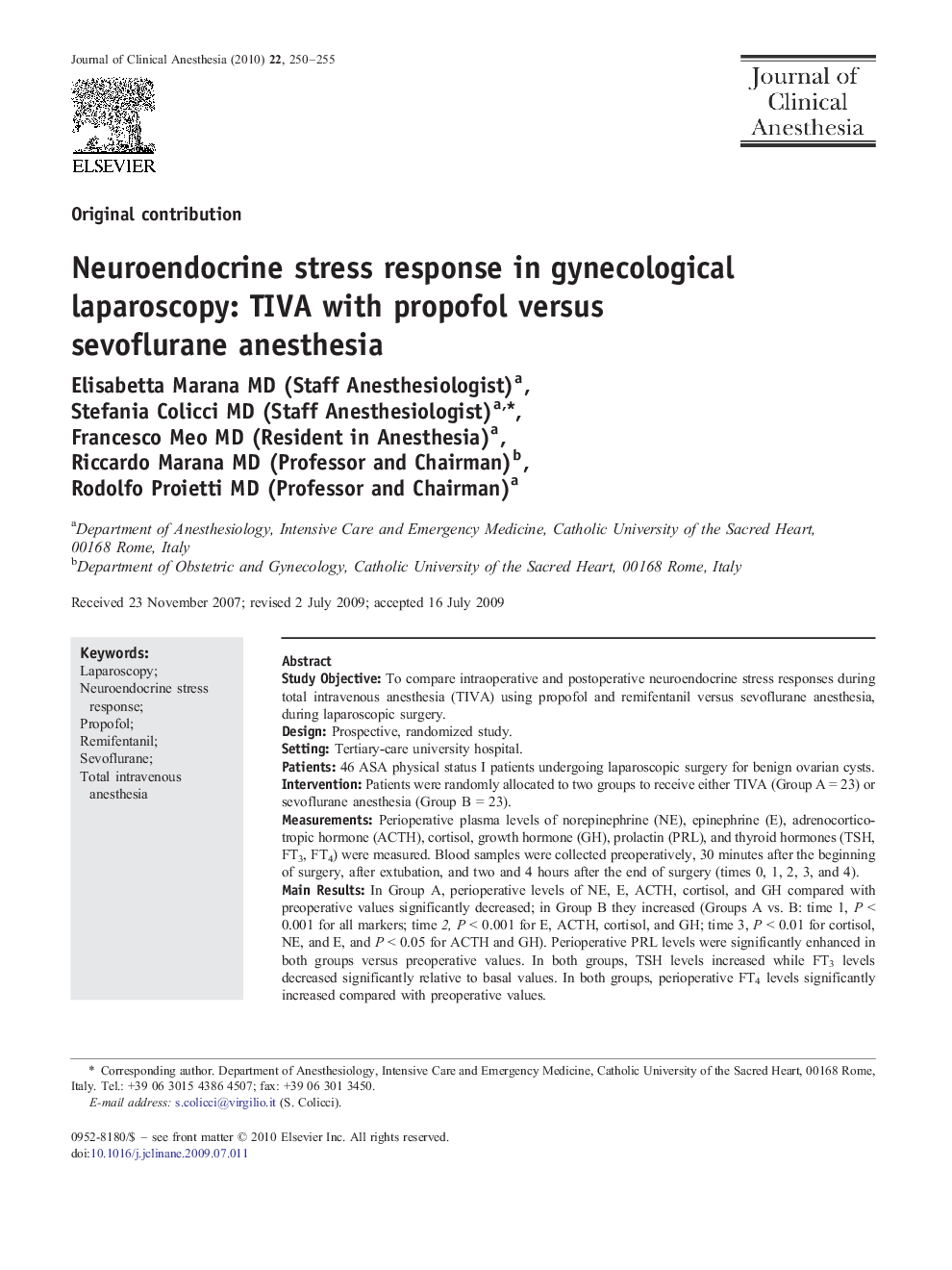| Article ID | Journal | Published Year | Pages | File Type |
|---|---|---|---|---|
| 2763291 | Journal of Clinical Anesthesia | 2010 | 6 Pages |
Study ObjectiveTo compare intraoperative and postoperative neuroendocrine stress responses during total intravenous anesthesia (TIVA) using propofol and remifentanil versus sevoflurane anesthesia, during laparoscopic surgery.DesignProspective, randomized study.SettingTertiary-care university hospital.Patients46 ASA physical status I patients undergoing laparoscopic surgery for benign ovarian cysts.InterventionPatients were randomly allocated to two groups to receive either TIVA (Group A = 23) or sevoflurane anesthesia (Group B = 23).MeasurementsPerioperative plasma levels of norepinephrine (NE), epinephrine (E), adrenocorticotropic hormone (ACTH), cortisol, growth hormone (GH), prolactin (PRL), and thyroid hormones (TSH, FT3, FT4) were measured. Blood samples were collected preoperatively, 30 minutes after the beginning of surgery, after extubation, and two and 4 hours after the end of surgery (times 0, 1, 2, 3, and 4).Main ResultsIn Group A, perioperative levels of NE, E, ACTH, cortisol, and GH compared with preoperative values significantly decreased; in Group B they increased (Groups A vs. B: time 1, P < 0.001 for all markers; time 2, P < 0.001 for E, ACTH, cortisol, and GH; time 3, P < 0.01 for cortisol, NE, and E, and P < 0.05 for ACTH and GH). Perioperative PRL levels were significantly enhanced in both groups versus preoperative values. In both groups, TSH levels increased while FT3 levels decreased significantly relative to basal values. In both groups, perioperative FT4 levels significantly increased compared with preoperative values.ConclusionsTIVA inhibited the ACTH-cortisol axis and reduced NE, E, and GH levels, but it enhanced PRL and had a weak effect on thyroid hormone concentrations as compared to sevoflurane anesthesia.
